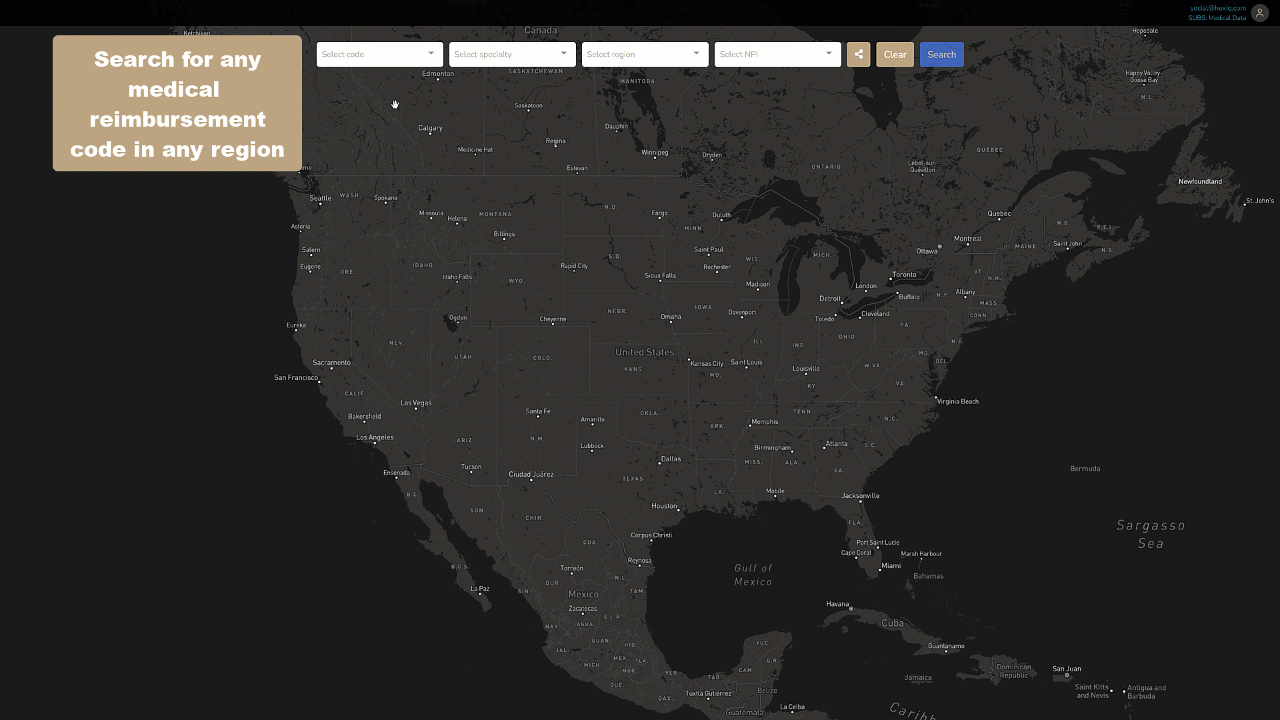
Resources
Leverage Newly Released Reimbursement Rate Data to Negotiate Better Rates with Payers

Many hospitals and private healthcare providers receive different payments for identical treatments and procedures. This means that there are inequities where reimbursement rates are concerned.
Until recently, it was impossible for medical practices to confidently negotiate fee increases with payers. The major limitation was the lack of access to relevant data to guide the negotiation preparation and decision-making phases. Thanks to the Transparency in Coverage laws issued by the Centers for Medicare and Medicaid Services (CMS), this narrative has changed.
This article explores the impact of this development on your medical practice. You’ll also learn how to make the most of this newly accessible dataset.
How the Transparency in Coverage Rule Impacts Private Healthcare Providers
The Transparency in Coverage rule mandates insurance companies to publish all data related to the cost of healthcare and reimbursement rates for public access. The data includes negotiated service rates and out-of-network allowed amounts between healthcare providers and health plans. It exists within machine-readable files that enable researchers, regulators, and other interested parties to access and analyze the data.
What does this data do for your practice?
Easy planning for fee negotiation
Negotiating reimbursement fee increases requires two major kinds of data. First, you need data that contains details about all your payers, the codes for each procedure, and the allowed amounts for each code. Second, you need as much information as possible about reimbursement fees from the same payers to other practices similar to yours.
Before the Transparency in Coverage rule, you most likely only had access to one of these datasets. Now, the availability of reimbursement rate data simplifies your analysis. It removes the tedious task of determining if you’re selling yourself short, or asking too much. It also helps you identify the top payers for specific procedures, and lets you decide if it’s wise to drop the plan or close to new patients.
Competitive advantage
The data published by the insurance companies under the Transparency in Coverage rule identifies healthcare providers, specialties, and other relevant details like allowed and paid fees. This means you have unrestricted access to competitor information, which places you in an excellent position to make certain adjustments that promote growth for your practice. It may not guarantee that you’ll get exactly what other practices are receiving, but it’ll give you an idea of how to get close to that number.
Guides the negotiation process
If you’re feeling courageous, you may want to negotiate an increase for all codes that concern your practice. However, this approach usually doesn’t yield good results. An alternative and more efficient approach is to be strategic about your requests by taking a closer look at your data.
For many private practices, some codes appear more frequently over a set time period, say, a year. There will also be codes that occur only a few times, but have a relatively high dollar value. If you pay attention to these two categories and compare your numbers to other practices, there’s a high chance that you’ll find an opportunity that you can leverage. You’re looking for practices that receive a relatively higher fee for those selected categories. With that information, you can ask for better rates, or choose to switch plans to better payers.
If you’d like a more detailed breakdown of reimbursement fee negotiation, this article by Gregory Mertz in the Family Practice Management peer-reviewed journal does justice to the process.
Accessing and Using the Reimbursement Rate Data: The Pulse Medical Tool
The reimbursement rate data is available for download on publicly accessible platforms like the data archive of the CMS. However, downloading the data is the least of your problems.
While the Transparency in Coverage rule mandated data publishing for insurance companies, it didn’t specify any human-readable formats in which the negotiated rate data must be published. As machine-readable files, these datasets are huge, impossible to understand by simple scanning, and difficult to analyze with tools like Excel. It requires highly skilled developers (and high-powered machines) to be truly accessible, both of which only a few practices can afford.
The good news is that there are tools and solutions under development to tackle this data usability issue. One of them is the Pulse Medical Tool, created by HexIQ. Pulse Medical is an interactive, easy-to-use, web-based software. Healthcare providers and researchers can input any procedural codes of choice, select specialties (like family medicine), select any region in the United States, input the 10-digit national provider identifier (NPI) for any provider of interest (not compulsory), and search for respective data.
It takes only seconds to run and displays the total number of providers, procedures, and the total value in dollars. It also shows the names of practices and their corresponding identification details. You can download the results for rates and providers in an Excel spreadsheet and analyze the data to generate as much insight as you’d like.

How to Access and Benefit from Pulse Medical
Launching the Pulse Medical tool opens a page that prompts you to enter codes, practice specialty, and location. Before you can access the results, you’ll need to create an account with your email and work address, then log in after confirmation. Once that’s done, you can browse the platform for free and get the information you need for a limited time.
For access to unlimited reports with negotiated rates for codes of interest, you can subscribe to Pulse Medical at $100 per month or a discounted rate of $1,000 per year. Other benefits you’ll be getting from HexIQ and Pulse Medical include:
- PDF reports showing negotiated rates by providers and by codes
- CSV files that can be converted to Excel spreadsheet for analysis
- Employer compliance cost of care reports that ensures transparency with employees when choosing or renewing health plans
- Custom reports from custom data analysis by our data science team
Looking to access high-quality data on negotiated rates? Book a demo session with our team. We can’t wait to show you how this works.








